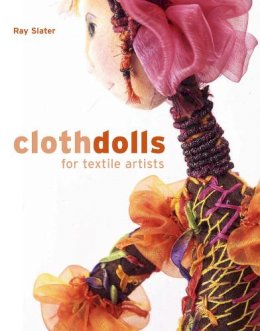
Cloth Dolls for Textile Artists
Ray Slater
Cloth dolls are a huge hit in the creative world and textile artists have taken up the challenge, using them as the perfect three-dimensional vehicle for expressive textile art. A range of innovative textile techniques can be used to make stunning dolls. In 'Cloth Dolls for Textile Artists' the author provides patterns for different doll shapes, from the simplest stump doll to the more complicated jointed doll. The book gives practical instruction on needle-sculpting expressive faces, as well as details on how to use the patterns to make the basic cloth doll. Then you can really start to express yourself by using a range of textile techniques on the doll, whether directly on to the body or on the clothes – from beading, hand embroidery, machine embroidery and stamping to dyeing, felting (ideal for hair!) and even quilting.
Product Details
About Ray Slater
Reviews for Cloth Dolls for Textile Artists
Quilting Arts
Nov 08 Textile artists will find plenty of inspiration with these amazing cloth dolls. Beautifully decorated in intricate detail, these fabulous dolls incorporate a variety of techniques to create realistic faces, vibrant outfits plus wild and woolly hair. There are full instructions and patterns to create three types of doll – a simple stump doll, a spindly wired doll and a traditional stuffed cloth doll. Close up photos and illustrations are used every step of the way so that the reader can recreate the dolls with ease and learn a whole variety of decorative techniques as they progress. These include free motion stitching, creating cords and making layered fabrics, plus ideas for using paints, dyes, water-soluble film and soldering irons. There is also specific guidance for doll making showing how to needle-sculpt faces, create realistic hands, shape limbs, attach hair and work with different types of filling and stuffing. A useful suppliers list will help source everything that's needed.
SEWING WORLD
Dec 08 I'm not really into dolls but, if I were, I'd love Ray Slater's. However, this book is about so much more than doll making and I think it deserves a place on every embroiderer's shelf. This is because of the methods that Ray uses. Most of them are known to us but she does such lovely things with water-soluble fabric, a soldering iron, appliqué and other such techniques, that there is much to be learned. The book is divided into three main sections: stump, wired & stuffed dolls. However, within the making instructions are sections such as creating texture with hand stitching, working with layered fabrics, machine wrapped cords and braids, all key topics in their own right, whatever your textile leanings. An excellent book.
Workshop On The Web
